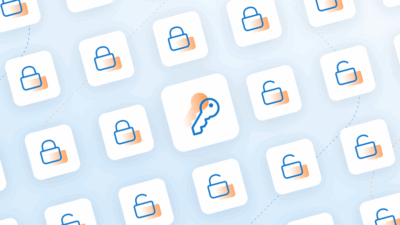The number of new SaaS startups has exploded – but there’s a big difference between starting a digital business and being successful with it, long-term. A major factor is your revenue model. Choosing the wrong one limits your profitability.
Here’s a look at four ways your digital product can generate serious revenue. Does one of these options have the potential to reshape your business strategy?
Fixed Charge Model
A fixed charge model is also called pay-per-use or one-time billing. The customer makes a single purchase at a fixed price, and may or may not conduct future business with your company.
Many SaaS startups launch with a fixed charge model, because of its simplicity. It has a straightforward revenue formula and customers like the predictability of a one-time charge.
Be cautious about using this model due to the challenge of customer retention. If your strategy is laser-focused on one-time sales, your users might not feel a deeper connection with you. When it comes time to buy again, they’ll look around, which could have a potentially negative impact on your revenue stream.
Charging a single fixed price can also reduce the perceived value in the customer’s mind. Your digital product seems like a one-off, and might even come across as cheaply made or disposable.
Freemium Model
In a freemium model, the basic digital product is free, but you charge for additional features. Many SaaS businesses divide this into two simple options, like “free” and “pro” versions or make it time-based, like “30 days free.” Some companies create multiple packages, each of which starts with freebies and rounds out with premium features.
MailChimp, the email marketing platform, found success with freemium pricing. A basic account that handles up to 12,000 emails a month is free. Additional features start at $10 per month. Most professional marketers quickly discover they need the premium plan as their client base grows, hence the success of MailChimp’s model.
One potential limitation to the freemium model is that free-use customers don’t know what they’re missing in the premium version. This is why some services sprinkle a call to action like “Get the full report for just $4.99” throughout the free version.
Google Penalty Checker, a Google-compliance tool created by a company called Fruition, solves this problem with grayed-out text. Free version users can see a preview of enticing data in gray text, which can be activated with a premium account.
Almost-Freemium Model
Okay, so imagine you’re using a freemium model, but nobody is upgrading to the paid version. You’re basically giving your product away. What do you do?
Many SaaS businesses turn to the almost-freemium model, which some experts call a smarter alternative to freemium pricing. Instead of getting your users hooked on free, ask them to pay a nominal fee to start.
Zendesk’s CEO, Mikkel Svane, is a big fan of this model. Zendesk offers The Starter Plan, which is just $1 and allows basic use of the service. Charging $1 weeds out all the users who would never pay for anything, ever. It also makes customers feel just a tiny bit invested in the relationship, so they’ll pay closer attention to Zendesk’s other offers.
Subscription Model
Give serious thought to using the subscription revenue model, because it’s one of the quickest ways to multiply your revenue. Unlike models that rely on single purchases, subscriptions generate income through an ongoing payment relationship.
Customers may hesitate when presented the option of subscribing, so you’ll want to reassure them along the way that you’re a reputable company they can trust for the long haul. The ideal subscription setup offers a small number of tempting package options, clear policies and exclusions, and a quick, smooth subscription process.
If you’re struggling to get people to subscribe to your service in the first place, consider an offshoot of the subscription model: freemium/subscription pricing, where the basics are free but the full package requires a subscription. It combines the traffic-driving power of free offers with the long-term success of subscription billing.
Adobe is a company that uses subscriptions to maximum effect. To manage its complex subscription structure, Adobe uses FastSpring, a full-service billing and customer management platform. As Ken Toole, Adobe’s senior director of product development, explained, “We selected FastSpring because of its robust technology platform and excellent customer service.”
If a subscription revenue model is the right choice for you, download our checklist to make sure that you have an engine managing it on the backend.
![[Customer Story] Why TestDome Considers FastSpring a Real Partner](https://fastspring.com/wp-content/themes/fastspring-bamboo/images/promotional/2023/FastSpring-TestDome-blog-thumbnail.jpg)








